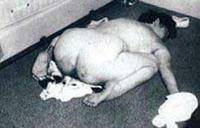This is an old revision of the document!
PBS220Y: History of Social Reform
The Pro-Abortion Movement
It is worth noting that the pro-abortion movement also achieved social reform, in part, through the use of graphic depictions of what they were fighting against. One doesn’t have to agree with their conclusion in order to agree that their methodology worked. Canadian abortionist Garson Romalis conveys the power of graphics in his 2008 National Post article, “Why I am an abortion doctor.” He wrote, “Abortion was illegal when I trained, so I did not learn how to do abortions in my residency, although I had more than my share of experience looking after illegal abortion complications.”1 Indeed, he did. He began his obstetrics and gynecology residency in 1962 and “will never forget the 17-year-old girl lying on a stretcher with 6 feet of small bowel protruding from her vagina.”2
The graphic image Romalis saw in-person was something abortion advocates knew would help sway public opinion, and policy, in their favour. In 1964, an American woman, Gerri Twerdy Santoro, was found dead as a result of a self-induced illegal abortion. She was only 28 years old and had two other children. Fearing her abusive estranged husband would kill her if he discovered she was pregnant by another man, she and her boyfriend aborted their pre-born child. In the process, she herself died and was found lying face down in a pool of blood. The photograph of this horrific site first appeared in MS Magazine in April 1973.3 It has since been used by the pro-abortion movement as a tool to make their case for why abortion should remain legal. 
The Abortion Caravan
In 1970, hundreds of women gathered in Vancouver to protest limited access to abortion. They then climbed into vehicles and began to drive across the country in what history has come to call “The Abortion Caravan.” Many Canadian historians credit this Caravan with laying the groundwork to the 1988 Supreme Court decision to strike down all abortion laws.
A core team of pro-abortion protestors drove from Vancouver to Ottawa. When they arrived they left a coffin—representing women who died from illegal abortions—at the Prime Minister's house. They piled objects in it that women used to perform illegal abortions, such as knitting needles, a Lysol container, and a vacuum cleaner hose. Their protest forced Parliament to shut down for over half an hour. The nation was forced to consider an issue they had previously ignored.
These abortion advocates used vivid imagery—coffins and coat hangers—to draw attention away from the pre-born and force politicians and the public to focus on the women in front of them.
The women of the abortion caravan had two goals:
- Repeal of the abortion laws, and
- Free abortion on demand.
18 years later, they got what they wanted when the Supreme Court of Canada threw out all protection for Canadian pre-born children in the 1988 Court decision R. v. Morgentaler.
hey wanted to draw attention to the deaths of women who perished from illegal abortion so they displayed a coffin on Trudeau’s lawn,